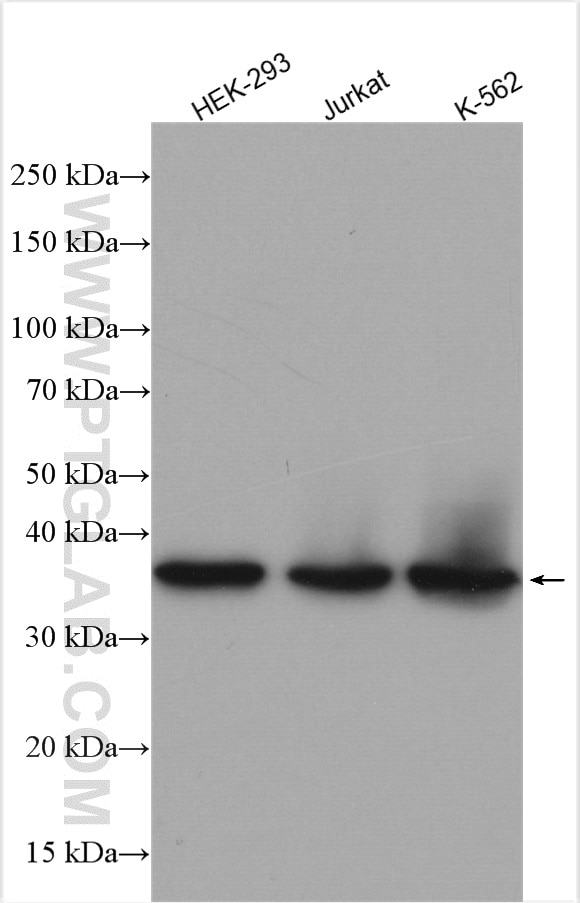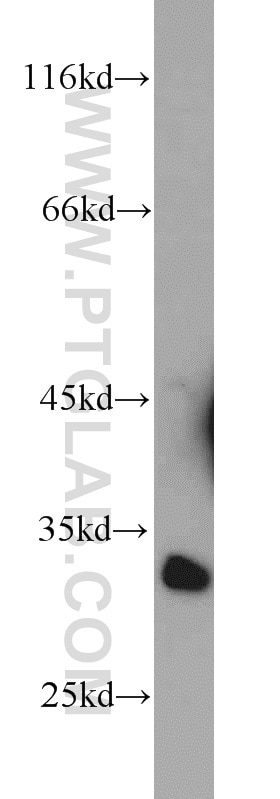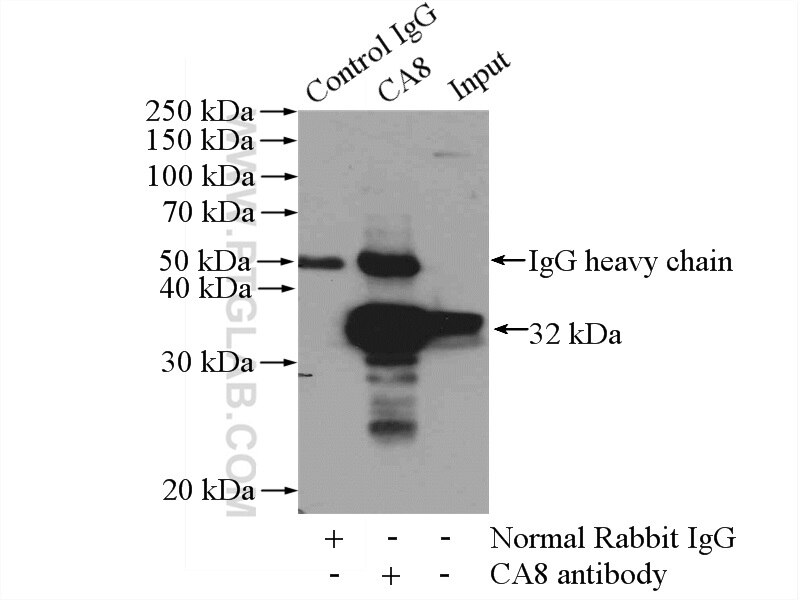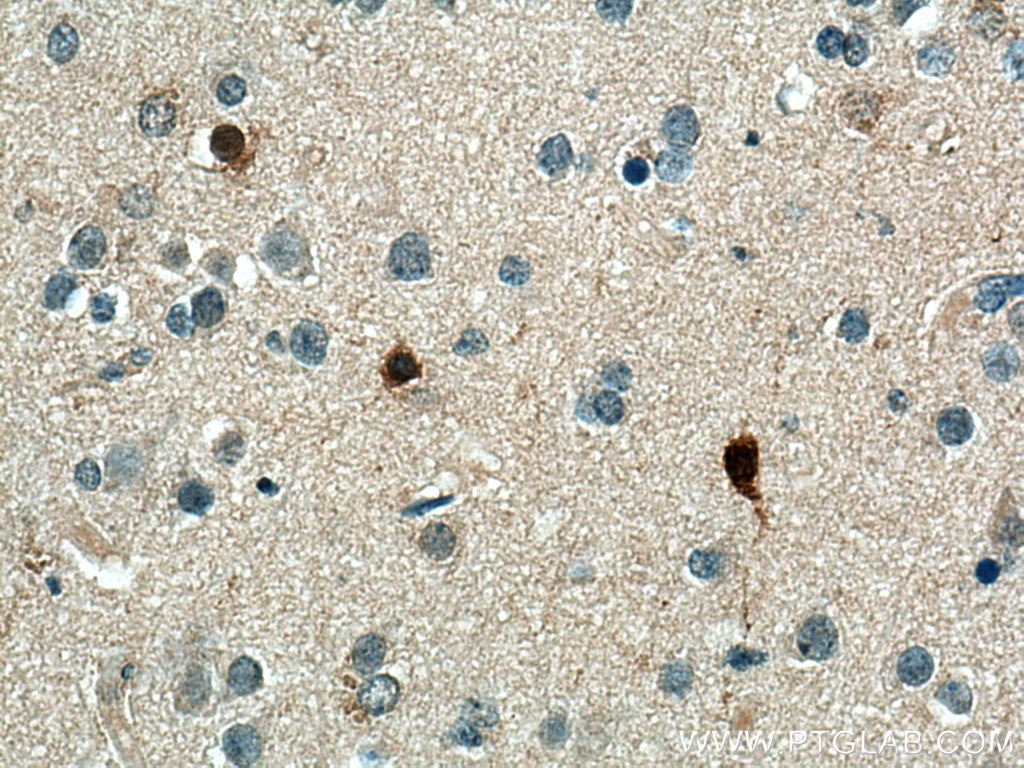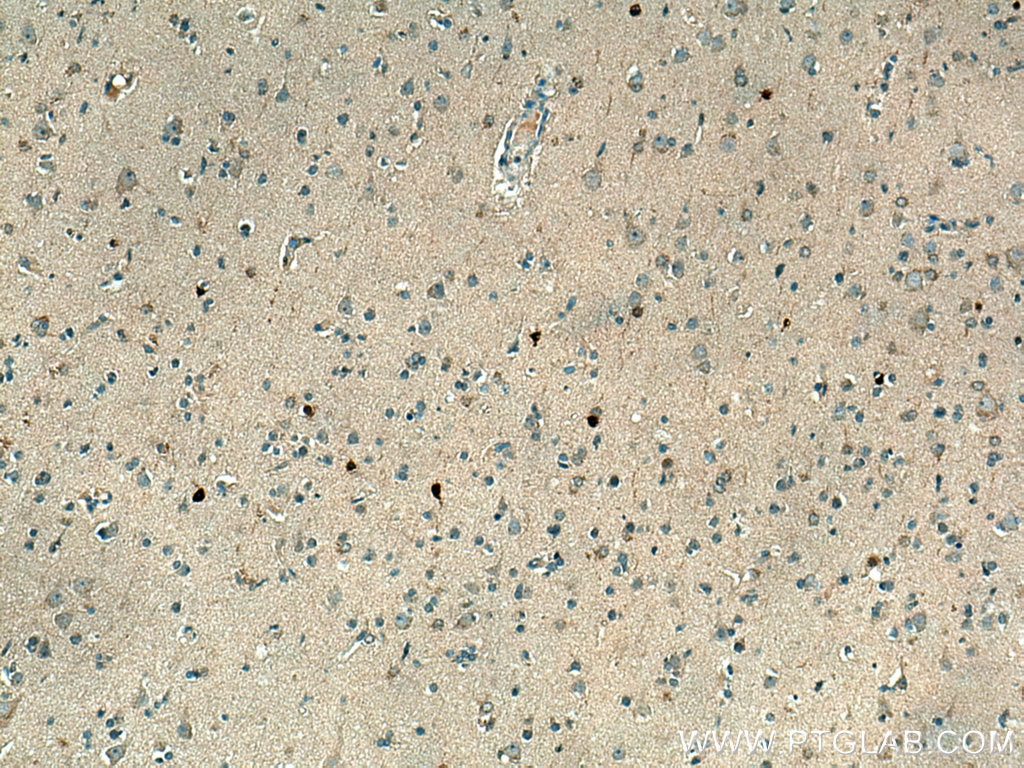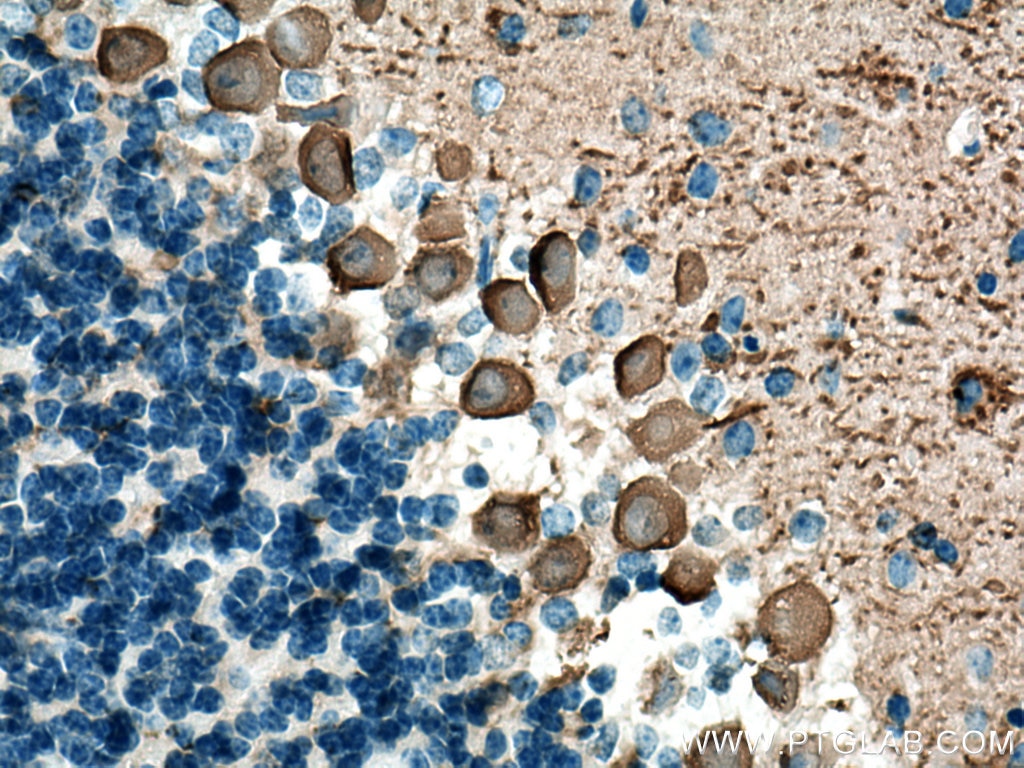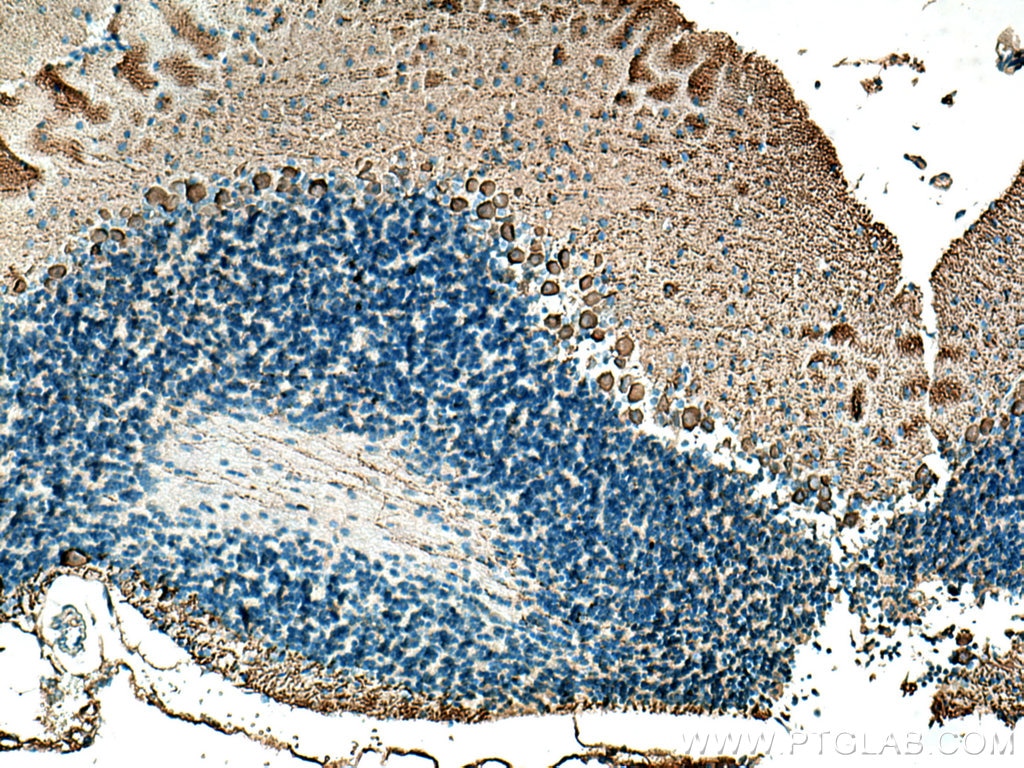Validation Data Gallery
Tested Applications
| Positive WB detected in | HEK-293 cells, mouse brain tissue, Jurkat cells, K-562 cells |
| Positive IP detected in | mouse brain tissue |
| Positive IHC detected in | human gliomas tissue, mouse cerebellum tissue Note: suggested antigen retrieval with TE buffer pH 9.0; (*) Alternatively, antigen retrieval may be performed with citrate buffer pH 6.0 |
Recommended dilution
| Application | Dilution |
|---|---|
| Western Blot (WB) | WB : 1:2000-1:12000 |
| Immunoprecipitation (IP) | IP : 0.5-4.0 ug for 1.0-3.0 mg of total protein lysate |
| Immunohistochemistry (IHC) | IHC : 1:50-1:500 |
| It is recommended that this reagent should be titrated in each testing system to obtain optimal results. | |
| Sample-dependent, Check data in validation data gallery. | |
Published Applications
| KD/KO | See 2 publications below |
| WB | See 2 publications below |
| IHC | See 5 publications below |
| IF | See 2 publications below |
| IP | See 2 publications below |
Product Information
12391-1-AP targets CA8 in WB, IHC, IF, IP, ELISA applications and shows reactivity with human, mouse, rat samples.
| Tested Reactivity | human, mouse, rat |
| Cited Reactivity | human, mouse, rat |
| Host / Isotype | Rabbit / IgG |
| Class | Polyclonal |
| Type | Antibody |
| Immunogen |
CatNo: Ag3068 Product name: Recombinant human CA8 protein Source: e coli.-derived, PGEX-4T Tag: GST Domain: 1-143 aa of BC015531 Sequence: MADLSFIEDTVAFPEKEEDEEEEEEGVEWGYEEGVEWGLVFPDANGEYQSPINLNSREARYDPSLLDVRLSPNYVVCRDCEVTNDGHTIQVILKSKSVLSGGPLPQGHEFELYEVRFHWGRENQRGSEHTVNFKAFPMEVRIT 相同性解析による交差性が予測される生物種 |
| Full Name | carbonic anhydrase VIII |
| Calculated molecular weight | 290 aa, 32 kDa |
| Observed molecular weight | 32-35 kDa |
| GenBank accession number | BC015531 |
| Gene Symbol | CA8 |
| Gene ID (NCBI) | 767 |
| RRID | AB_2066277 |
| Conjugate | Unconjugated |
| Form | |
| Form | Liquid |
| Purification Method | Antigen affinity purification |
| UNIPROT ID | P35219 |
| Storage Buffer | PBS with 0.02% sodium azide and 50% glycerol{{ptg:BufferTemp}}7.3 |
| Storage Conditions | Store at -20°C. Stable for one year after shipment. Aliquoting is unnecessary for -20oC storage. |
Background Information
The CA8 (CARP) gene encodes carbonic anhydrase VIII, which is part of a family of zinc metalloenzyme. CA8 has a central carbonic anhydrase motif, but it lacks carbonic anhydrase activity due to absence of catalytic zinc coordinating residues(PMID:2121526). CARP is a novel IP3R1-binding protein, and is expressed in Purkinje cells abundantly. CA8 is co-localized with IP3R1 in Purkinje cells and it binds to IP3R1, reducing the affinity of the receptor for its ligand, IP3(PMID:12611586). Defects in CA8 are the cause of cerebellar ataxia mental retardation and dysequilibrium syndrome type 3 (CMARQ3)(PMID:19461874).
Protocols
| Product Specific Protocols | |
|---|---|
| IHC protocol for CA8 antibody 12391-1-AP | Download protocol |
| IP protocol for CA8 antibody 12391-1-AP | Download protocol |
| WB protocol for CA8 antibody 12391-1-AP | Download protocol |
| Standard Protocols | |
|---|---|
| Click here to view our Standard Protocols |
Publications
| Species | Application | Title |
|---|---|---|
Nucleic Acids Res Short DNA/RNA heteroduplex oligonucleotide interacting proteins are key regulators of target gene silencing.
| ||
J Am Soc Nephrol Single-Cell RNA Sequencing Reveals Renal Endothelium Heterogeneity and Metabolic Adaptation to Water Deprivation. | ||
Biomed Pharmacother CA8 promotes RCC proliferation and migration though its expression level is lower in tumor compared to adjacent normal tissue.
| ||
PLoS One Mechanisms that determine the internal environment of the developing brain: a transcriptomic, functional and ultrastructural approach. | ||
Am J Physiol Gastrointest Liver Physiol Carbonic anhydrase 8 (CAR8) negatively regulates GLP-1 secretion from enteroendocrine cells in response to long-chain fatty acids. | ||
Nat Commun Glutamatergic cerebellar neurons differentially contribute to the acquisition of motor and social behaviors |

